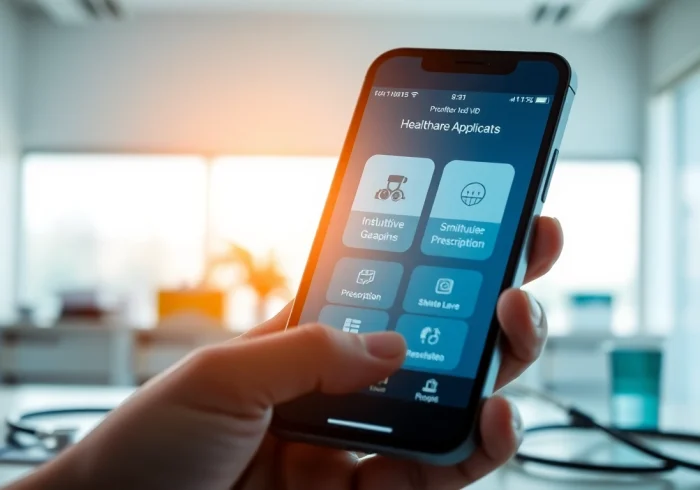Understanding E-Prescribing Software
Definition and Functionality
E-prescribing software, also known as electronic prescribing software, is a digital solution that allows healthcare providers to write and manage prescriptions electronically. Unlike traditional paper prescriptions, e-prescribing eliminates the need for handwritten notes, reducing the chances of errors related to misinterpretation or illegibility. It enables healthcare professionals to create, modify, and transmit prescriptions directly to pharmacies, streamlining the process and improving medication safety.
Benefits of Utilizing E-Prescribing Software
Implementing e-prescribing software offers numerous advantages for healthcare providers, patients, and pharmacies. Some key benefits include:
- Enhanced Accuracy: E-prescribing systems help reduce medication errors due to illegible handwriting and coded prescriptions by providing clear electronic instructions.
- Increased Efficiency: The ability to send prescriptions instantly to pharmacies saves time for healthcare providers and improves workflow efficiency.
- Improved Patient Safety: E-prescribing software can alert providers to potential drug interactions or allergies, ensuring safer prescribing practices.
- Cost-Effectiveness: By reducing prescription errors and associated complications, e-prescribing can lead to reduced healthcare costs overall.
- Data Tracking and Analytics: E-prescribing systems often include analytics features that enable providers to track and analyze prescription patterns, helping identify issues early and improve overall care.
Common Challenges Faced
While the benefits of e-prescribing are significant, several common challenges may arise during implementation:
- Technical Issues: Software glitches and compatibility with existing systems can hinder the ability to transmit prescriptions smoothly.
- Training Needs: Healthcare professionals may require significant training to adapt to new e-prescribing systems, causing initial disruptions in workflow.
- Resistance to Change: Some staff and practitioners may be resistant to adopting new technology, preferring traditional methods.
- Patient Communication: Educating patients on electronic prescriptions and their benefits may be necessary to ensure understanding and trust in the system.
Key Features of E-Prescribing Software
Interaction with Electronic Health Records (EHR)
A robust e-prescribing system should seamlessly integrate with Electronic Health Records (EHR). This integration allows healthcare professionals to access a patient’s complete medical history, ensuring well-informed prescribing decisions. By synchronizing data across platforms, providers can instantly view allergy information, current medications, and relevant health conditions, thereby enhancing prescribing accuracy.
Integration with Pharmacy Systems
E-prescribing software needs to be compatible with pharmacy systems to enable direct transmission of prescriptions to pharmacies. This integration simplifies the medication dispensing process and can include features like automatic refills and prescription tracking, further facilitating patient care.
User Experience Considerations
An intuitive user interface is essential for e-prescribing software. Well-designed systems should be easy to navigate, allowing healthcare providers to input prescriptions quickly. Additionally, features like customizable templates, search functions, and mobile access can improve user satisfaction and adherence to the software.
Evaluating E-Prescribing Software Reviews
Criteria for Evaluating Software Based on Reviews
When assessing e-prescribing software, it’s crucial to review feedback using a consistent set of criteria:
- Functionality: Does the software meet the user’s prescribing needs effectively? Are features like drug interaction alerts and medication history available?
- Usability: Is the software user-friendly? Are there complaints regarding navigation or user experience?
- Integration: How well does the software integrate with EHR and pharmacy systems? Are there any issues reported by users?
- Customer Support: What level of support does the vendor provide? Are users satisfied with the responsiveness and helpfulness of the support team?
- Overall Satisfaction: An aggregate assessment of how well the software meets user expectations and requires criteria.
Identifying Reliable Sources of Reviews
Reliable software reviews can be found in several forms. Professional review sites are often the most comprehensive, providing detailed comparisons and aggregate scores. Likewise, testimonials on forums and healthcare industry blogs can reveal real-world user experiences and insights regarding specific software features, benefits, and drawbacks.
Understanding User Feedback and Experiences
To effectively gauge software quality, it’s essential to read and analyze user feedback thoroughly. Look for patterns in comments, particularly regarding software performance, support, and usability. Positive trends typically indicate a reliable product, while recurrent complaints may signal significant concerns that should be addressed before proceeding with implementation.
Comparing Top E-Prescribing Software
Features and Pricing Comparison
When shopping for e-prescribing software, a features and pricing comparison is critical. Identify which functionalities are non-negotiable for your practice and compare them to what each provider offers. Consider evaluating based on key metrics such as:
- Types of prescriptions supported (controlled substances, etc.)
- Costs associated with the software (both upfront and ongoing fees)
- Availability of free trials or demos
- Customizability and integration options
Analysis of User Ratings
User ratings can provide a quick indicator of how well the e-prescribing software performs generally. Pay attention to the average ratings across different platforms, as well as the number of ratings. A highly-rated product with many users might be a safer choice than a product with a good rating based on only a few reviews.
Trending E-Prescribing Software Options
Keeping an eye on the latest trends in e-prescribing software can help ensure that you select a product that remains relevant and effective. Look for new features like telemedicine integrations and advanced analytics that cater to an evolving healthcare landscape. Be mindful of user trends and emerging technologies that could enhance the software’s capabilities.
Implementing E-Prescribing Software in Practice
Steps for Smooth Implementation
Implementing e-prescribing software involves several critical steps:
- Initial Assessment: Assess the current workflow and identify specific needs for the software.
- Choose the Right Software: Select an e-prescribing solution that meets the practiced requirements determined in the previous step.
- Plan for Integration: Develop a clear plan for how the new software will be integrated with current systems (such as EHR).
- Training Sessions: Conduct thorough training for all staff who will use the software to ensure they understand all features and functionalities.
- Full Launch and Monitor: Launch the software and monitor its efficacy, addressing any issues as they arise.
Training Staff for Optimal Use
Training is an essential component of implementing e-prescribing software. Provide comprehensive training sessions that cover not only the technical aspects of using the software but also emphasize the best practices for prescribing securely and efficiently. Continuous feedback and refresh training sessions should be scheduled to enhance long-term proficiency.
Monitoring and Evaluating Performance
Once the software is implemented, it’s crucial to monitor its performance over time. Collect feedback from users, evaluate the software’s integration with other systems, and assess workflow efficiency. Regular reviews of performance metrics can help identify areas for further improvement and ensure that the e-prescribing solution continues to meet the evolving needs of the practice.
In conclusion, choosing the right e-prescribing software can significantly enhance the efficiency and safety of medical prescribing practices. By understanding its functionalities, evaluating software reviews, and implementing the system strategically, healthcare providers can improve patient outcomes and streamline operations effectively. For those seeking detailed guidance, comprehensive eprescribing software reviews are available to assist in making informed decisions.



